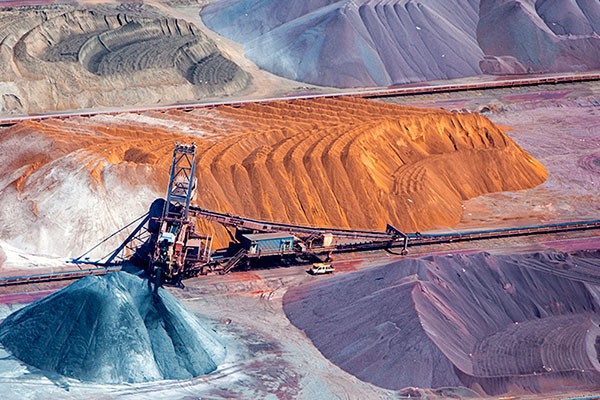When I ask students what their favourite accounting standard is, no one has ever said IFRS 6, Exploration for and evaluation of mineral resources. When teaching students this standard, the reaction is generally surprise that it exists as an International Financial Reporting Standard due to the low level of detail included.
When the International Accounting Standards Board issued IFRS 6 in 2004 it was only intended as an interim step, allowing entities to continue to apply some aspects of their existing accounting policies for exploration and evaluation expenditure until the IASB reviewed the accounting practices of entities engaged in extractive activities. Unsurprisingly, this has led to diversity in practice in the accounting policies developed by entities with extractive activities.
Recognition and measurement
A key point of contention is found in paragraph 9, which states that ‘an entity shall determine an accounting policy specifying which expenditures are recognised as exploration and evaluation assets and apply the policy consistently’.
To the casual observer, this seems to be almost disconcertingly vague, allowing entities to select their own policy that is relevant to the decision-making of the users and that results in the production of reliable information. As a result, IFRS 6 doesn’t give any clear guidance as to when an asset can be recognised in this instance.
According to the definition of an asset per the revised conceptual framework (a present economic resource controlled by the entity as a result of past events), the rights and results of drilling are potentially capable of being recognised as assets. The lack of clear definition of what goes into that asset has led to differing views over recognition, and even whether that asset should be classed as ‘tangible’ or ‘intangible’.
If IFRS 6 were removed
A potential result of the research could be that IFRS 6 is not needed, and could simply be replaced by the existing standards that look closely at the accounting for non-current assets. In response to this, a recent piece of IASB research looked at how the principles of IAS 16, Property, plant and equipment, IAS 38, Intangible assets, and IAS 36, Impairment of assets, could be applied to exploration and evaluation expenditure.
The research concluded that under the principles of IAS 16 it was unlikely that the expenditure would result in an asset. The main reason is the criteria in IAS 16, paragraph 7 that an item can only be recognised as property, plant and equipment if it is probable that future economic benefits will flow to the entity.
IASB staff believe that this probability criteria would not be met during the exploration and evaluation phase of extractive activities, due to the low probability of success. If a probability criterion is applied, it is likely that this would only be met when the entity is nearing completion of (or has already completed) the exploration and evaluation activities
Applying IAS 36 without the principles of IFRS 6 would generally lead to an immediate write‑off of exploration and evaluation assets
IFRS course
ACCA offers an online course, ‘IFRS complete package’ to help you refresh basic IFRS knowledge and also learn new and interesting things about the standards.
If the principles of IAS 38 were applied, the IASB came to the same conclusion, in that the expenditure would not constitute an asset. Again, the key principle was the lack of probable future economic benefits.
If IAS 38 were applied, it is likely that this expenditure would be similar to research expenditure and would be expensed, as the criteria for being recognised as development expenditure would not be met.
Currently IFRS 6 has specific requirements relating to impairment that differ from the requirements in IAS 36. Applying IAS 36 without the principles of IFRS 6 would generally lead to an immediate write‑off of exploration and evaluation assets. As the work would not have reached a state where future cash flows could be estimated, calculations surrounding fair value or value in use would not be possible.
Needed but inadequate
The above shows that under some of the major existing standards surrounding non-current assets, exploration and evaluation expenditure would not be recognised as an asset. This would dramatically alter the balance sheets of some of the major companies in the world, so it can be seen that IFRS 6 is needed to allow assets to be recognised. The status quo of companies being allowed considerable freedom to determine whether items constitute an asset cannot remain, however.
In this sense, the standard can feel a little like IFRS 4, Insurance contracts, which was issued at a similar time and also provided limited detail on specific accounting issues, allowing significant scope for judgment. The recent issue of a new standard in IFRS 17, Insurance contracts, to replace IFRS 4 potentially shows the path ahead for IFRS 6.
IFRS 17 was the culmination of a large amount of work to provide detail in relation to that unique industry, and it feels like any future work on the accounting in extractive industries should go the same way. IFRS 6 is needed, but it’s not enough.






